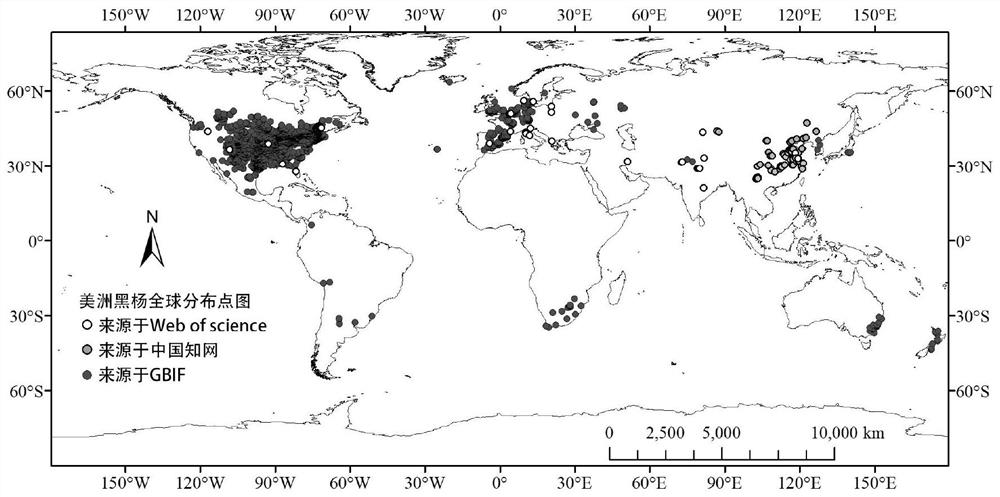Industrial timber forest productivity prediction method based on species distribution and productivity coupling
A technology of species distribution and prediction method, which is applied in the direction of prediction, energy industry, data processing application, etc., can solve problems such as inability to realize large-scale simulation and difficult productivity prediction, and achieve high reference value and operability
- Summary
- Abstract
- Description
- Claims
- Application Information
AI Technical Summary
Problems solved by technology
Method used
Image
Examples
Embodiment Construction
[0041] Below in conjunction with specific examples, further illustrate the present invention, the examples are implemented under the premise of the technical solutions of the present invention, it should be understood that these examples are only used to illustrate the present invention and are not intended to limit the scope of the present invention.
[0042] Such as figure 1 As shown, the method for predicting the productivity of industrial timber forests based on the coupling of species distribution and productivity in this application mainly includes the following steps:
[0043] S1: Modeling the contemporary global habitat distribution of industrial timber forests, using the established maximum entropy model (MaxEnt model) to simulate the environmental suitability of industrial timber forests under contemporary climate scenarios;
[0044] Before building the model, first collect the data and use the appropriate data for modeling. The data mainly includes big data on the ...
PUM
 Login to View More
Login to View More Abstract
Description
Claims
Application Information
 Login to View More
Login to View More - R&D
- Intellectual Property
- Life Sciences
- Materials
- Tech Scout
- Unparalleled Data Quality
- Higher Quality Content
- 60% Fewer Hallucinations
Browse by: Latest US Patents, China's latest patents, Technical Efficacy Thesaurus, Application Domain, Technology Topic, Popular Technical Reports.
© 2025 PatSnap. All rights reserved.Legal|Privacy policy|Modern Slavery Act Transparency Statement|Sitemap|About US| Contact US: help@patsnap.com



